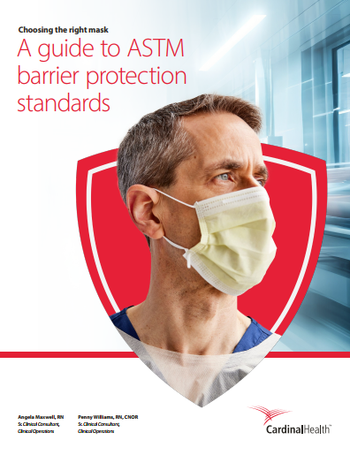
Does qualitative fit testing answer the important questions?

A blog that explores if qualitative fit testing provides adequate information to determine a good respirator fit.
Many healthcare facilities and other workplaces still use qualitative fit testing methods for their respiratory protection programs. Qualitative fit testing is a manual method that uses a challenge agent (like Saccharin or Bitrex) to subjectively measure if respirators fit those who wear them.
While qualitative testing is widely used and fully compliant, it can be the cause of much uncertainty for respiratory protection program administrators and respirator wearers, and doesn’t always fully answer some important fit test questions
HAVE YOU CHOSEN THE RIGHT RESPIRATOR?
Other than producing a ‘pass’ or ‘fail’ test result, qualitative fit testing does not provide guidance on choosing the right respirator. Administrators must rely on their own experience and the result of a subjective test in order to match respirators to staff. This often leads to a lengthy process of trial-and-error, finally settling on a respirator that seems to work.
Further information during the respirator selection process would help administrators be certain they have identified the right size and style respirator before the fit test. Starting with the right respirator would allow administrators to achieve a better fit and protection for staff and pass fit tests more often the first time.
DOES YOUR STAFF UNDERSTAND HOW TO WEAR RESPIRATORS FOR MAXIMUM PROTECTION?
Administrators do the best job they can to train staff how to wear respirators correctly. This training is crucial to the proper wear and use of a respirator and resulting protection. However, with qualitative fit testing, workers and staff cannot see the changes in protection levels during donning, adjustment and wear.
This missing feedback can provide invaluable training and practical knowledge to respirator wearers. Improving training by providing real-time feedback would allow respirator wearers to understand exactly how to fit and wear respirators to get the highest levels of protection possible.
IS YOUR FIT TEST AN ACCURATE ASSESSMENT OF RESPIRATOR FIT AND PROTECTION?
A qualitative fit test relies on the respirator’s self-reported feedback to sensing the challenge agent. As this test relies on the senses of taste and smell, those being tested often have a difficult time accurately reporting whether they sense the presence or absence of the challenge agent. Furthermore, as this feedback is self-reported, there is room for test manipulation.
As the test result is only a subjective pass or fail, there is some uncertainty as to how well the respirator actually fits and protects. Are staff just barely passing fit tests, or are they passing by a substantial margin? With qualitative fit testing, the test result will check the box for compliance but what does it really say about the real-world protection that a respirator will provide?
ARE STAFF RECEIVING A PROPERLY-PERFORMED FIT TEST?
Finally, there is the topic of qualitative fit testing done incorrectly. As this is a manual fit testing method, it relies on a fit test administrator’s ability to perform all of the steps and to perform them correctly and consistently across all employees in their programs. While there are detailed instructions and steps for performing qualitative fit tests, in the end the quality of the test relies on the competency of each fit test administrator.
While the fit test administrators do their very best to protect the health and safety of their staff, inconsistencies in training, personnel experience, and organizational pressures can cause inconsistencies in the application of this manual fit testing method.
HOW CAN I BE CERTAIN?
All of the uncertainties above can be eliminated by quantitatively measuring respirator fit. The quantitative fit testing method used by PortaCount® Respirator Fit Testers measures particles inside and outside of a respirator. These measurements form a ratio called a “Fit Factor” that gives administrators and staff real data on how respirators fit.
This data can be used to quickly match respirators to staff, provide real-time feedback for better training, and give an exact measure of how well a respirator will fit and protect.
To learn more about how you can be certain you are providing staff with the best respirator fit possible, visit:
Newsletter
Stay prepared and protected with Infection Control Today's newsletter, delivering essential updates, best practices, and expert insights for infection preventionists.




